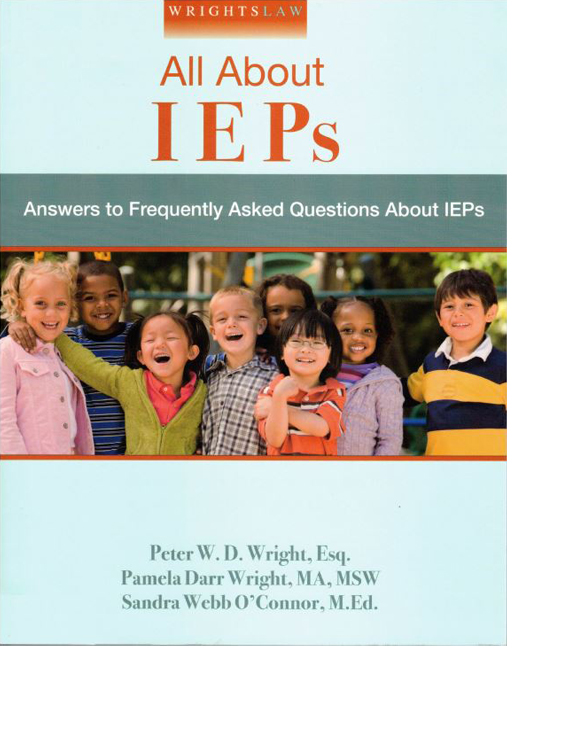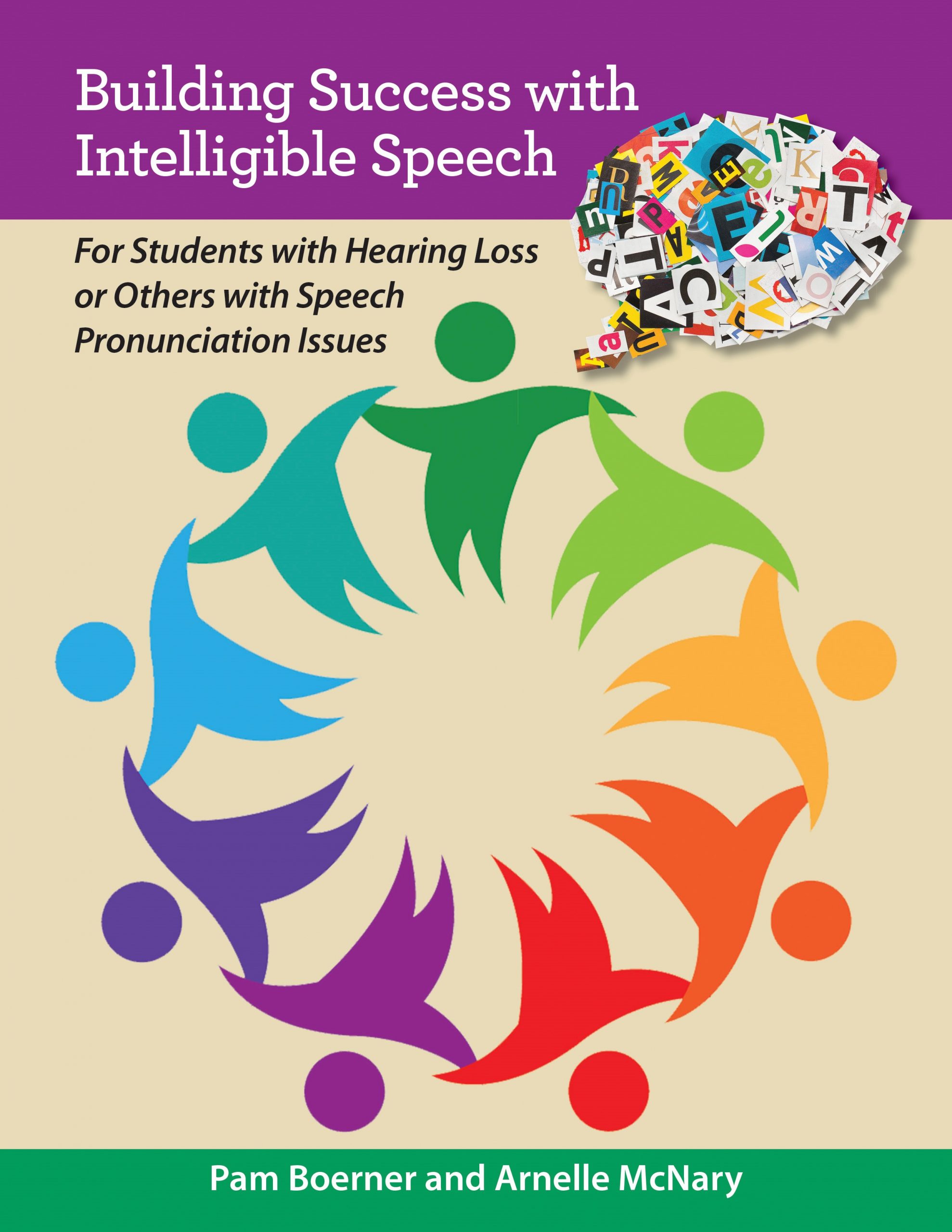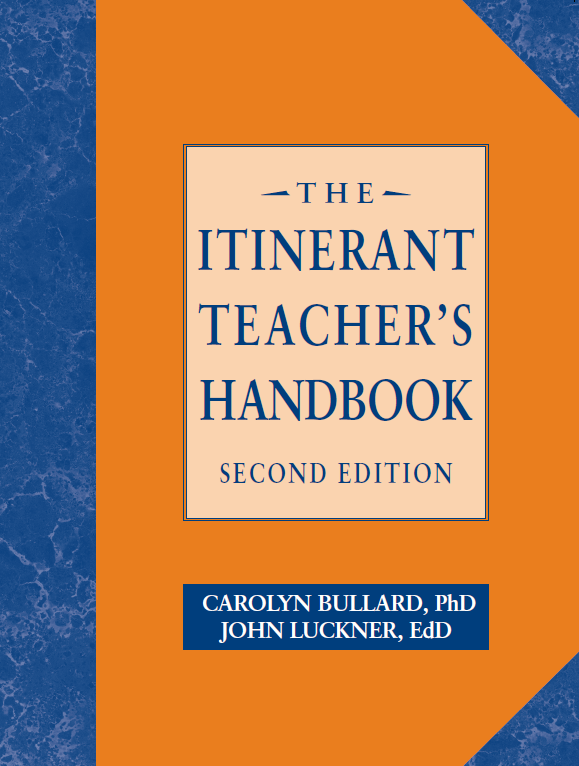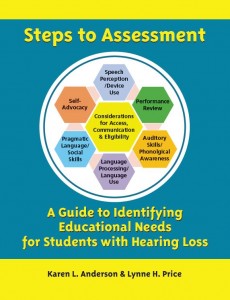Related Products
For Professionals
- Amplification
- Assessment of Student Skills, Challenges, Needs
- Early Childhood: Infants, Toddlers, Preschool
- Hearing Loss – Identification, Impact and Next Steps
- IDEA Law Summary Information
- Language and Speech Development Issues
- Legal Issues in Serving Children with Hearing Loss
- Listening (Auditory Skills) Development
- Planning to Meet Student Needs
- Self-Advocacy Skills for Students with Hearing Loss
- Self-Concept: How the Child with Hearing Loss Sees Himself
- Social Skills
- Speech Perception & Learning
Related Teacher Tools Takeout Items
Assessment of Student Skills, Challenges, Needs
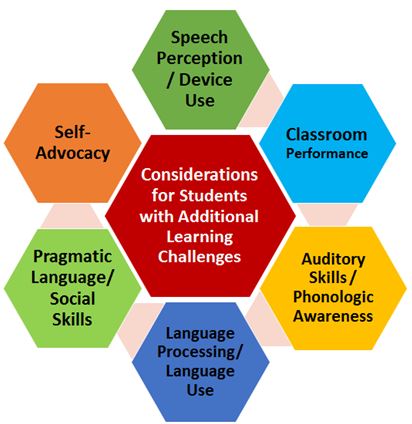 Appropriate evaluation of children with hearing loss means assessing the performance areas most vulnerable to challenges due to the access issues resulting from hearing loss or deafness.
Appropriate evaluation of children with hearing loss means assessing the performance areas most vulnerable to challenges due to the access issues resulting from hearing loss or deafness.
Tests – Informal Assessments for Parents, Students and Teachers
The eligibility considerations wheel shown was developed by Karen Anderson and Lynne Price.
This list corresponds to each of the areas identified in the image above. It was prepared as a supplement to
Steps to Assessment for use during the 2-day
Steps to Assessment Workshop presented by Karen Anderson and Lynne Price. The list is designed to provide guiding questions for school teams to consider when determining eligibility and should answer the questions, “Are the selected assessment sufficient in scope and intensity to identify gaps in auditory, language, narrative discourse, academic and social language skills?” and “Has testing been conducted to provide information on a student’s typical performance in the classroom, versus optimal performance?” (i.e., a student may do very well 1:1 in quiet but not be able to keep pace in the classroom). What assessments will YOU perform to gather data about each of these functional performance areas?
Our Assessment Challenges
1. Only 1 of every 100 students with IEPs is qualified under the category of deaf/hard of hearing. This means that school teams are not accustomed to thinking about learning issues caused by a sensory impairment access issue rather than from a learning difference due to a disorder. This etiology of learning issues is critical!
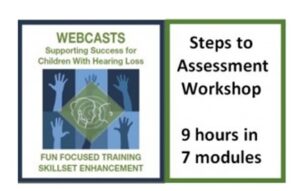 2. Early detection and intervention can result in children having skills similar to age peers at school-age. Research indicates low-average performance as a typical outcome of appropriate early services. This beginning does NOT innoculate a child from having future learning issues. Unlike children from impoverished backgrounds who often start school with low-average abilities, students with hearing loss won’t catch up and thrive in a school environment due to the acoustically hostile conditions and the fact that they will not (cannot) benefit from incidental learning opportunities to the same degree as their typically hearing peers. If a team does not believe that there is evidence of educational impact, then the key question to address is
2. Early detection and intervention can result in children having skills similar to age peers at school-age. Research indicates low-average performance as a typical outcome of appropriate early services. This beginning does NOT innoculate a child from having future learning issues. Unlike children from impoverished backgrounds who often start school with low-average abilities, students with hearing loss won’t catch up and thrive in a school environment due to the acoustically hostile conditions and the fact that they will not (cannot) benefit from incidental learning opportunities to the same degree as their typically hearing peers. If a team does not believe that there is evidence of educational impact, then the key question to address is
“How will we ensure that the student will continue to learn at the rate that has been demonstrated in early intervention since we can predict that the access barrier caused by hearing loss will cause him/her to receive less [complete] instruction than peers?” Thus, the 504 Plan needs to include careful monitoring of performance by someone with expertise issues related to learning with a hearing loss.
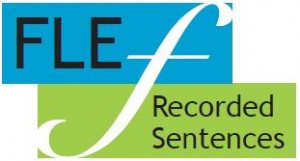
3. Eligibility evaluation requires assessment of academic and functional performance
using relevant assessment instruments. All too often, the same battery of norm-referenced tests is used on children with hearing loss, without consideration of what is relevant to determine in terms of functional performance of these students. For example, a student may score in the low/average range on a language test. These tests typically do not address
pragmatic language, or morphological awareness, areas in which children with hearing loss are often several years delayed and which will impact classroom participation, socialization and reading. A careful look at
how the child is able to perform in noise and at classroom distances is incredibly relevant, yet may not be considered (Starting School LIFE, FLE).
Conducting Valid Psychoeducational (IQ) Evaluations for Students with Hearing Loss
- Challenges of the School Psychologist – A Teacher Topics article from 2015-2016 written by Scott Buckley, EdS, National Certified School Psychologist with the Columbus Hearing Impaired Program, Columbus, OH.
- National Association of School Psychologists Position Statement on Serving Students Who Are Deaf or Hard of Hearing. After long deliberation, this consensus statement was established in 2012 and updated in 2020.
Why a low IQ score may not mean lower cognitive abilities
Students with hearing loss who were late-identified, did not use amplification (consistently) or had no consistent language input auditorilly and/or through visual communication will have language delays. When hearing loss is unidentified and communication development is not addressed, it is not unusual for a severe language delay of 1.5 years or more to be present. Language delays can involve difficulty with grammar (syntax), vocabulary (semantics), the rules and system for speech sound production (phonology), units of word meaning (morphology), and the use of language, particularly in social contexts (pragmatics). Expressive language delays may exist without receptive language delay, but they can also co-occur in mixed expressive/receptive language disorders (American Speech-Language-Hearing Association, 1993). As a consequence of the heavy verbal loading of most standardized cognitive assessments, children with severe language impairments are unable to be adequately assessed utilizing traditional cognitive assessment techniques. Indeed, research utilizing factor analyses has demonstrated that
nearly 50% of the variance in children’s performance on cognitive tests is accounted for by language abilities (Crepeau-Hobson & Vujeva, 2012), leaving little room for accurately assessing the cognitive ability of children with significant language impairments utilizing standard cognitive batteries. Go here for further information on the topic of cognitive assessment with children who are deaf or hard of hearing.

IDEA Information Specific to Evaluation
IDEA Sec. 300.304 Evaluation procedures.
(a) Notice. The public agency must provide notice to the parents of a child with a disability, in accordance with Sec. 300.503, that describes any evaluation procedures the agency proposes to conduct.
(b) Conduct of evaluation. In conducting the evaluation, the public agency must–
(1)
Use a variety of assessment tools and strategies to gather relevant functional, developmental, and academic information about the child, including information provided by the parent, that may assist in determining–
(i) Whether the child is a child with a disability under Sec. 300.8; and
(ii) The content of the child’s IEP,
including information related to enabling the child to be involved in and progress in the general education curriculum (or for a preschool child, to participate in appropriate activities);
(2)
Not use any single measure or assessment as the sole criterion for determining whether a child is a child with a disability and for determining an appropriate educational program for the child; and
(3)
Use technically sound instruments that may assess the relative contribution of cognitive and behavioral factors, in addition to physical or developmental factors.
(c) Other evaluation procedures. Each public agency must ensure that–
(1) Assessments and other evaluation materials used to assess a child under this part–
(i) Are selected and administered so as not to be discriminatory on a racial or cultural basis;
(ii) Are provided and administered in the child’s native language or other mode of communication and in the form most likely to
yield accurate information on what the child knows and can do academically, developmentally, and functionally, unless it is clearly not feasible to so provide or administer;
(iii)
Are used for the purposes for which the assessments or measures are valid and reliable;
(iv) Are administered by trained and knowledgeable personnel; and
(v) Are administered in accordance with any instructions provided by the producer of the assessments.
(2)
Assessments and other evaluation materials include those tailored to assess specific areas of educational need and not merely those that are designed to provide a single general intelligence quotient.
(3) Assessments are selected and administered so as best to ensure that if an assessment is administered to a child with impaired sensory, manual, or speaking skills, the assessment results accurately reflect the child’s aptitude or achievement level or whatever other factors the test purports to measure, rather than reflecting the child’s impaired sensory, manual, or speaking skills (unless those skills are the factors that the test purports to measure).
(4)
The child is assessed in all areas related to the suspected disability, including, if appropriate, health, vision, hearing, social and emotional status, general intelligence, academic performance, communicative status, and motor abilities;
(5) Assessments of children with disabilities who transfer from one public agency to another public agency in the same school year are coordinated with those children’s prior and subsequent schools, as necessary and as expeditiously as possible, consistent with Sec. 300.301(d)(2) and (e), to ensure prompt completion of full evaluations.
(6) In evaluating each child with a disability under Sec. Sec. 300.304 through 300.306, the evaluation is sufficiently comprehensive to identify all of the child’s special education and related services needs, whether or not commonly linked to the disability category in which the child has been classified.
(7)
Assessment tools and strategies that provide relevant information that directly assists persons in determining the educational needs of the child are provided.
(Authority: 20 U.S.C. 1414(b)(1)-(3), 1412(a)(6)(B) )
.
OTHER RESOURCES:
Resources for Assessment of Learners who are Deaf or Hard of Hearing
Source: MN Department of Education, 1/9/19
This manual provides information and guidance for conducting assessments and monitoring student progress.

